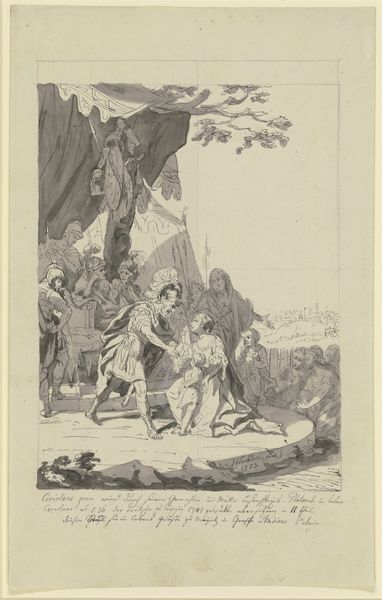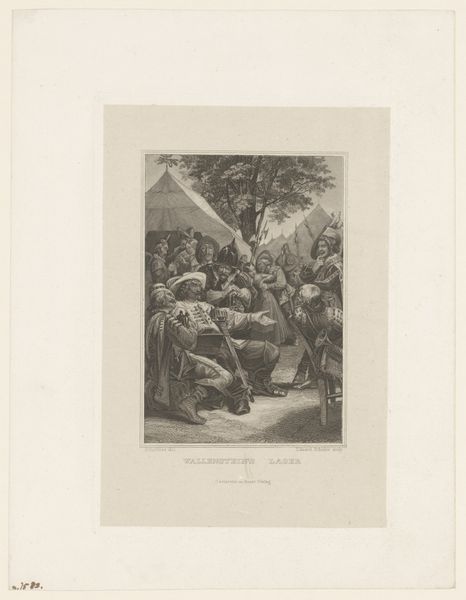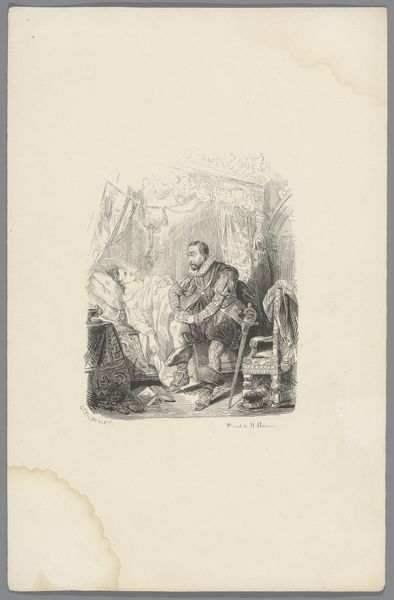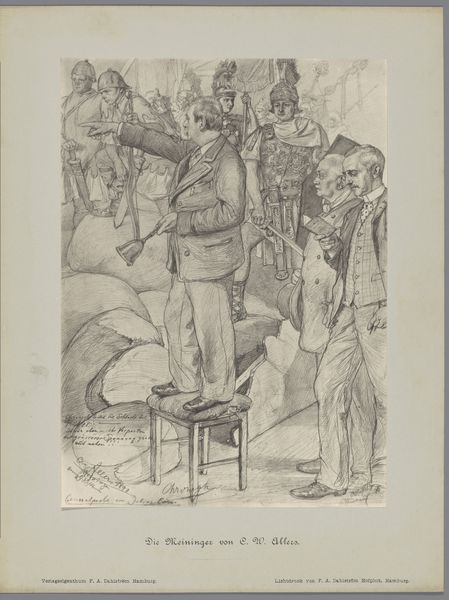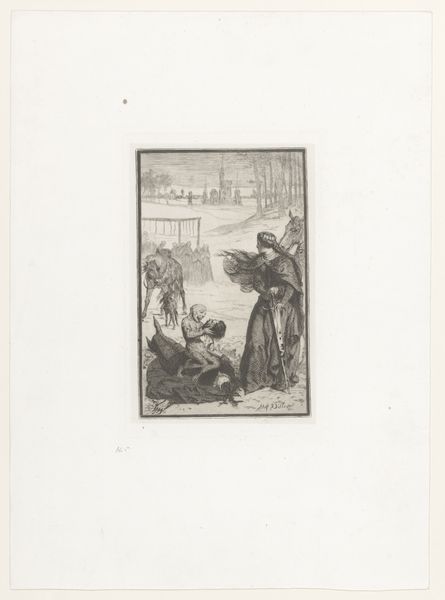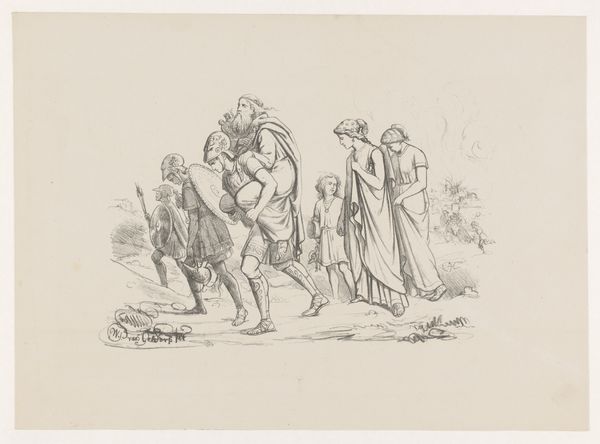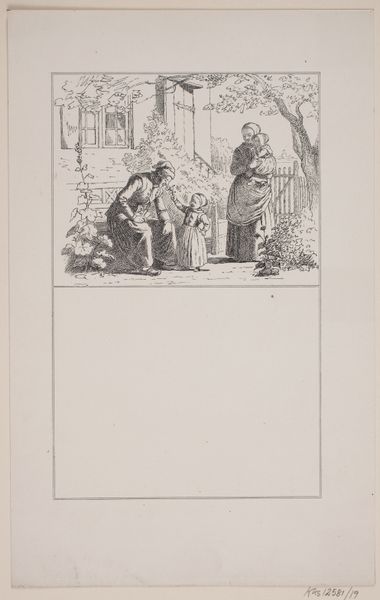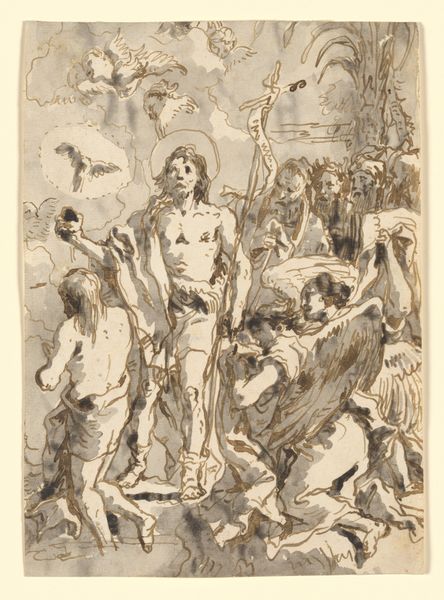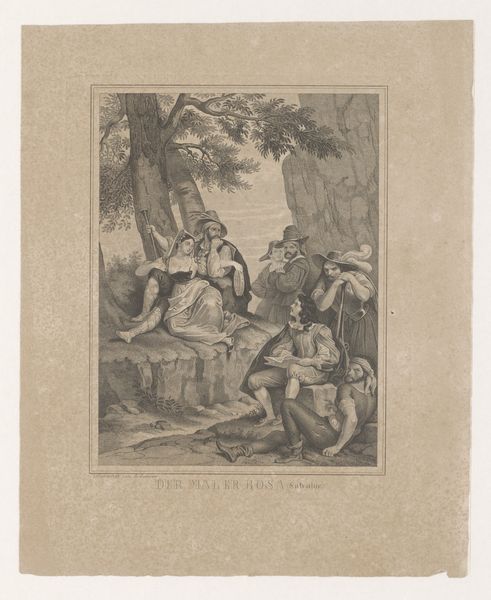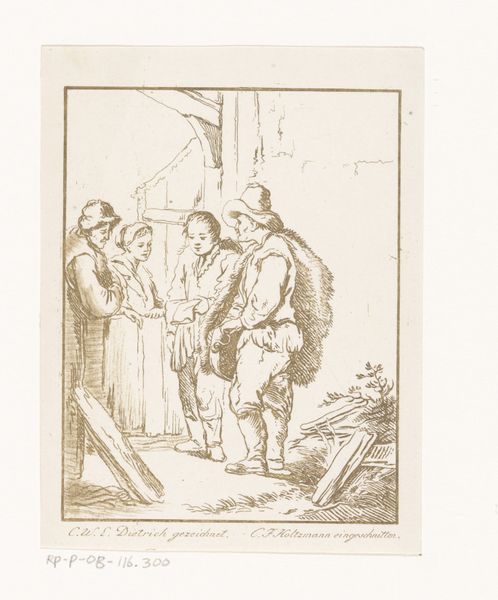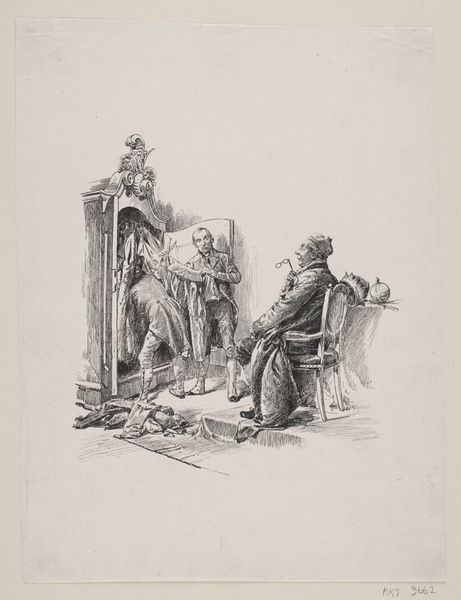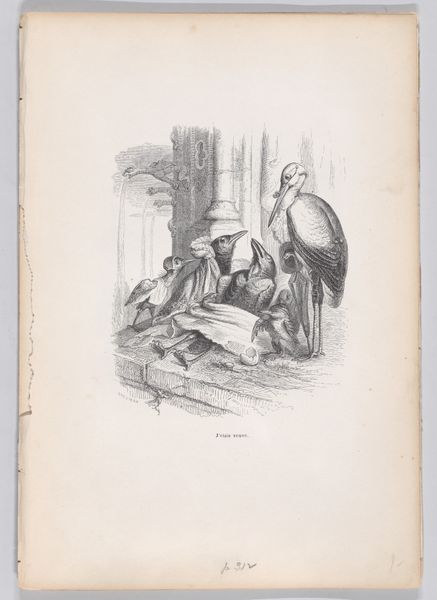
Dimensions: height 415 mm, width 305 mm
Copyright: Rijks Museum: Open Domain
Editor: So, here we have Wilhelmus Petrus van Geldorp's "Allegory of the Arts," created in 1873. It’s a pencil drawing, quite intricate. It seems to depict a classical scene, but with such an assortment of figures. What do you see in this piece? Curator: Well, it's very much a product of its time, wouldn't you agree? Academic art drawing heavily from Neoclassicism. The artist is clearly trying to convey the Arts in a very idealized, perhaps even propagandistic way. Look at the composition – the figures are staged as if performing on, or being observed in, a theatrical set. We see the central, presumably allegorical figures receiving what looks like divine blessing. Note the setting - the stage and staircase leading up. What's the effect of positioning it inside what might be a temple or government building? Editor: It gives it a sense of importance, definitely. The Arts as something sacred or crucial to society. So you think the setting implies the establishment and the powers that support the Arts? Curator: Precisely. Consider who the likely audience for a work like this would be in 1873. The academies, wealthy patrons, the state. And what message is being conveyed? Education, history and the Arts. What narrative is van Geldorp building for the purpose of displaying this "drawing" for public consumption? Who is represented on the lower step with a teacher? Are those robes symbolic? How did public institutions like art academies and museums dictate taste and what message did they want the "drawing" to convey to society and whom it should serve? Editor: That's interesting, how the intended audience really shapes the artwork itself. I suppose I was just seeing the surface of a historical moment. Curator: And seeing beyond that surface reveals the power dynamics and social constructs embedded within. It invites a more nuanced reading, don't you think? I am glad to learn from how your initial perspective made me question my bias when seeing art history. Editor: It certainly does. I learned how an artist can package and serve public expectations and perceptions.
Comments
No comments
Be the first to comment and join the conversation on the ultimate creative platform.

